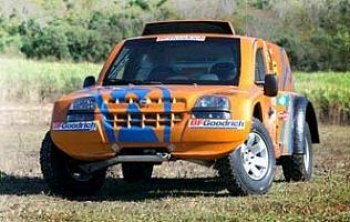|
Continuing the
theme of introducing higher-specification 'special series'
models across the range, Fiat have recently introduced the
DoblÚ Carioca.
Visually, the external differences are limited. New paint
options become available with greater colour-coding of the
body panels while the windscreen, door and side glass
receives a darker tint. A 'Plus Pack' offers roof bars,
chunky alloy wheels and plastic sill mouldings. Inside the
DoblÚ Carioca gains a new woven fabric in blue and grey,
adjustable seats with repositionable head rests, front
airbags, stereo and central locking.
Three engines are available in this new version: one petrol
(1.6-litre 16v with 103bhp) and two diesels (1.3-litre 16v
Multijet with 70bhp and a 1.9-litre JTD with 105bhp). The
DoblÚ Carioca 1.6 16v is very competitively priced at 15,530
euros for the Italian market, while the DoblÚ Carioca 1.3
Multijet will cost 16,830 euros, and the DoblÚ Carioca 1.9
JTD costs 17,850 euros.
Fiat DoblÚ -
brief history
The Fiat DoblÚ was first seen
at the Paris Motorshow in 2000, presented as a hybrid car/MPV.
Based on the chassis of the Palio Station Wagon the 'car' or
MPV version features a spacious five-seater interior with
two sliding rear doors plus a large hatch (or asymmetric
opening doors). The rear seats are split folding to leave a
large luggage area if required (up to 3000 litres with seats
folded), whilst storage compartments abound in the cabin,
including an innovative shelf above the windscreen. Safety
also featured heavily in the design, with ABS, airbags,
three-point seatbelts - fitted with pretensioners - and an
crash-optimised chassis structure.
|

 |
|
Fiat
Brazil prepared a 195bhp 2.4-litre rear wheel drive
'Rally-Raid' version of the Doblo (top) while the
Jamaican bobsleigh team will use a
specially-liveried Doblo Family (above) during the
2006 Winter Olympics being held in Turin |
|
|
 |
|
Continuing with the theme of introducing
higher-specification 'special series' models across
the range, Fiat have recently introduced the
Carioca version of the DoblÚ |
|
 |
|
|
Other versions, including a high-roof variant and a light
commercial vehicle (known as the DoblÚ Cargo) are also
added. Constructed at only one plant, in Turkey, the
mechanicals also borrow heavily from the Palio. The
suspension uses McPherson struts at the front while the rear
has a rigid axle with leaf springs. Braking is by ventilated
discs at the front and drums at the rear with ABS available
as an option, standard on some models and in some markets.
Two engines, a 1242cc petrol (65bhp) and a 1910cc diesel
(63bhp) were offered from the start, with 1.9JTD (100bhp
then later 105bhp) diesel and 1.6 16V (103bhp) petrol
engines being introduced later. A Natural Gas powered (bifuel,
also running on petrol) version was also available in some
countries. The Malibý was a version with various external
features highlighted in chrome finish and a richer content.
Last year
saw another slight revision to the range. Visually little
changed, some versions got body coloured rear pillars
(instead of the black) whereas under the bonnet a more
significant change took place with the deletion of the basic
1.9 diesel and the addition of the highly acclaimed new 1.3
16v MultiJet turbodiesel with 70bhp. Internally trim,
plastic colours and features were tweaked across the range.
The range
was also expanded with the addition of the "Family" version,
a seven seater, the extra seating being obtained by fitting
a (removable) two seat rear bench seat behind the existing
rear seats. Access was gained by tipping the two outer rear
seats forward.
In Brasil
the Doblo Adventure was offered, which features extra
plastic trim around the wheelarches, a more aggressive 4x4
style front and rear design and various detailing to all
enhance the off-road image of this vehicle such as the rear
door mounted spare wheel. That country also saw a
competition version developed for rally-raid type events.
Powered by the Fiat 2.4-litre 20v petrol unit pushing 195bhp
through the rear wheels, it features a significantly
modified bodywork and some rather striking orange and blue
graphics.
|
|
|
|
![]()
![]()